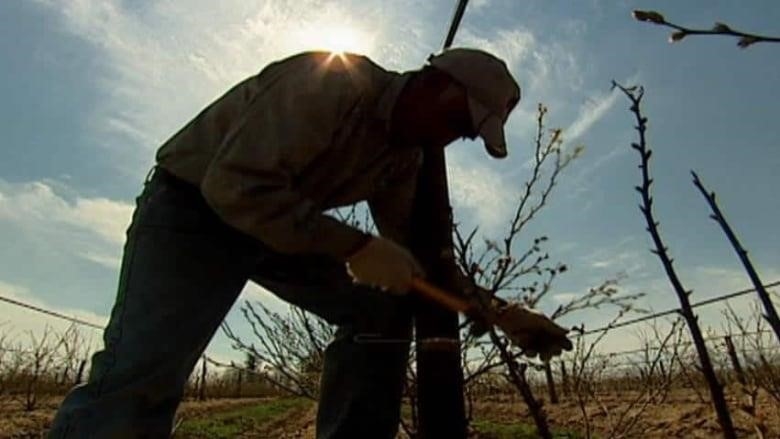
Critics say the move could lead to a “two-tier” system of immigration
Canada wants to get more people who work in tech to come to the country and work there. Critics of the plan worry that in the process of trying to do this, the rights of other migrant workers will be lost.
Immigration Minister Sean Fraser said last week that the federal government is looking into a list of possible policies to encourage high-earning tech workers to travel around the country and boost its tech sector. These policies include a renewed digital nomad scheme and open work permits.
Experts say the government risks keeping in place an unfair immigration system that gives some workers more mobility and freedom than others. The initiative could help bring in thousands of new workers to fill labor shortages and spur innovation.
“If it’s possible to make open work authorization for the tech industry to make it easier for workers to move around, then the same principle should apply to all migrants,” said Syed Hussan, the executive director of the Toronto-based advocacy group Migrant Workers Alliance for Change.
“Why do some people have more rights than others, and others don’t?”
Hussan and others who work in the field say that the open work permits and flexible work plans given to tech workers should be made more available to all types of migrant workers, especially those in industries like agriculture, personal care, and health care that are having trouble finding enough workers.
People who work in these industries, many of whom come from countries in the developing world and make low wages, are usually given restricted visas that limit how long they can stay in Canada based on their work with an employer, make it hard to get health insurance, and make it hard for them to speak out against unfair labor practices for fear of losing their permits, he said.

“Workers in any wage category should be able to come to Canada with the same rights, and that’s the main issue,” Hussan said.
Statistics Canada’s most recent data shows that agriculture, forestry, fishing, and hunting, health care and social assistance, and accommodation and food services have the highest job vacancy rates. Ottawa just started a separate temporary foreign worker program for immigrants who work in these and other industries.
Divide between richer and poorer worker
Due to the rise of the internet in the 1990s, said Valerie Ann Preston, a professor at Toronto’s York University in the faculty of environmental and urban change, Canada started putting more value on highly skilled tech workers.
She said that this was the first step toward giving highly skilled workers on temporary permits more benefits, like not being tied to a single employer, letting their spouses work in Canada, and making it easier to get permanent residency.

Preston said, “What’s interesting to me is that we still have the advantage of being high-tech workers.”
Preston said that a lot of these tech workers come from richer, more developed parts of the world. North America, Europe, Australia, New Zealand, Japan, and South Korea are some of these places. Other migrant workers, who are often given less generous work visas, come mainly from Africa, the Caribbean, Central and South America, and some parts of Asia.
They are often very skilled in their home country’s industries, but it can be hard for them to transfer those skills to the Canadian market. This can be because their work permits have restrictions, so they end up making a “trade-off” by working in industries that are in demand.
“They may have a lot of skills and experience, but they’re going into jobs that don’t give them a chance to move up in their careers and don’t pay well.”
How to fix the “two-tiered” syste
John Shields, a professor of politics and public administration at Toronto Metropolitan University, said that the government’s move to attract tech workers fits with its larger plan to use immigration to deal with labor shortages caused by an aging population and a lack of skills across the board.
But, he said, Canada risks putting inequity into its immigration law if it keeps giving more freedom to people at the “so-called top” of the job market without changing its acceptance standards for people in different but equally important industries.
WATCH | People from other countries who are trained to do jobs that are in demand but are working somewhere else:
“There’s a bit of a two-tier system here, where the immigration program puts a lot of emphasis on temporary migration for lower-skilled jobs, but it’s hard for people to qualify for permanent residency,” Shields said.
“But… those areas are often in high demand, and Canadian-born workers or immigrants who have been here for a long time don’t want to work in them.”
When asked if the government would consider giving open permits to more migrant workers, Immigration, Refugees, and Citizenship Canada said that employer-specific work permits “protect” the Canadian labor market, but it understands “the need for flexibility in this space.”
“That’s why, since 2019, we’ve let foreign nationals with an employer-specific work permit apply for an open work permit if they are being abused or are at risk of being abused at work,” a spokesperson said in an email statement, adding that people can also apply for new work permits and switch employers quickly if they get another job offer.
But Hussan thinks the government should get rid of the different levels of immigration and switch to a system where all workers get permanent residency as soon as they arrive. For Shields, the first step is to make it easier for all workers to get permanent residency.
“We need to fill those gaps all over the job market,” Shields said. “That includes some of these other areas, which should also be better known and paid more.”
